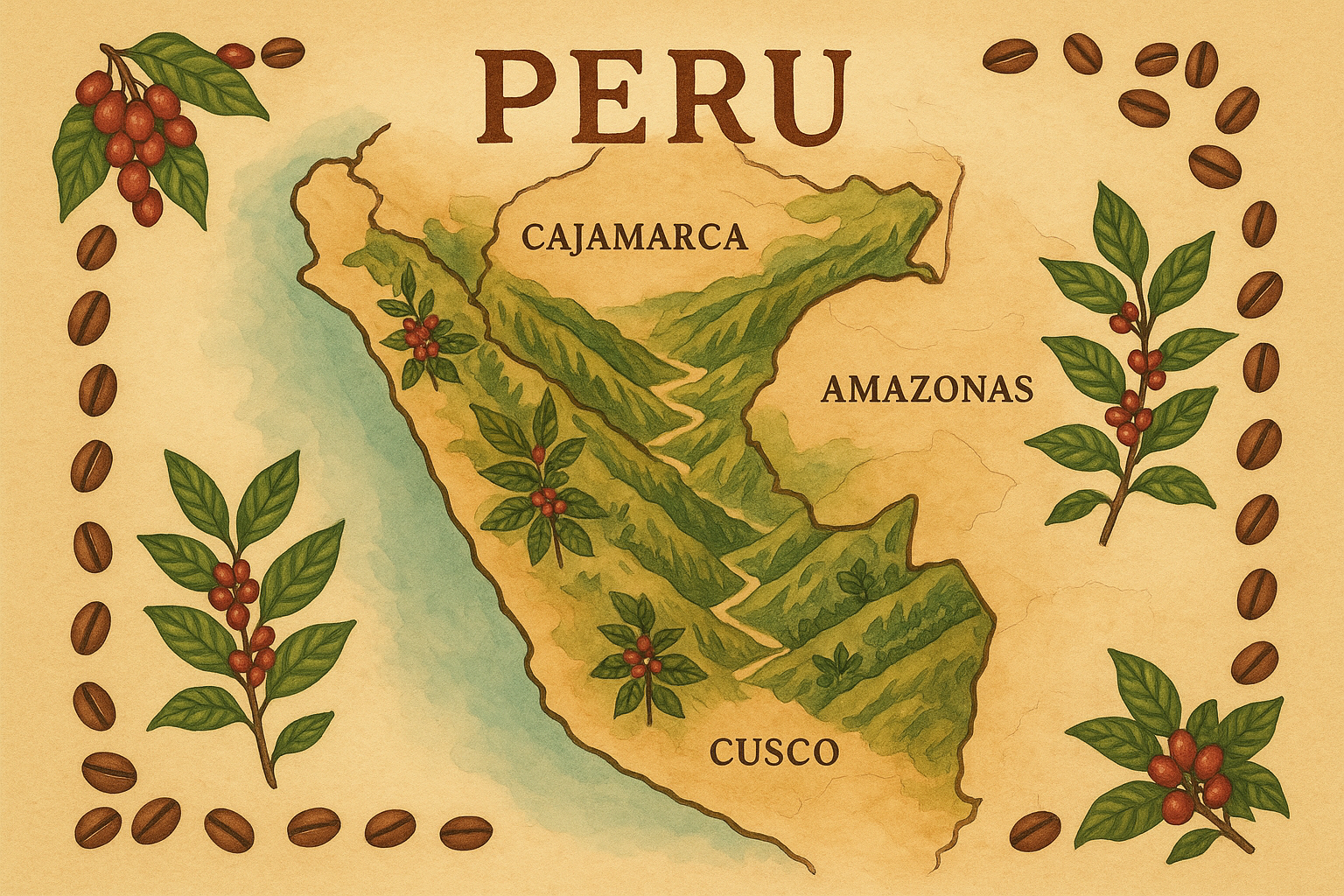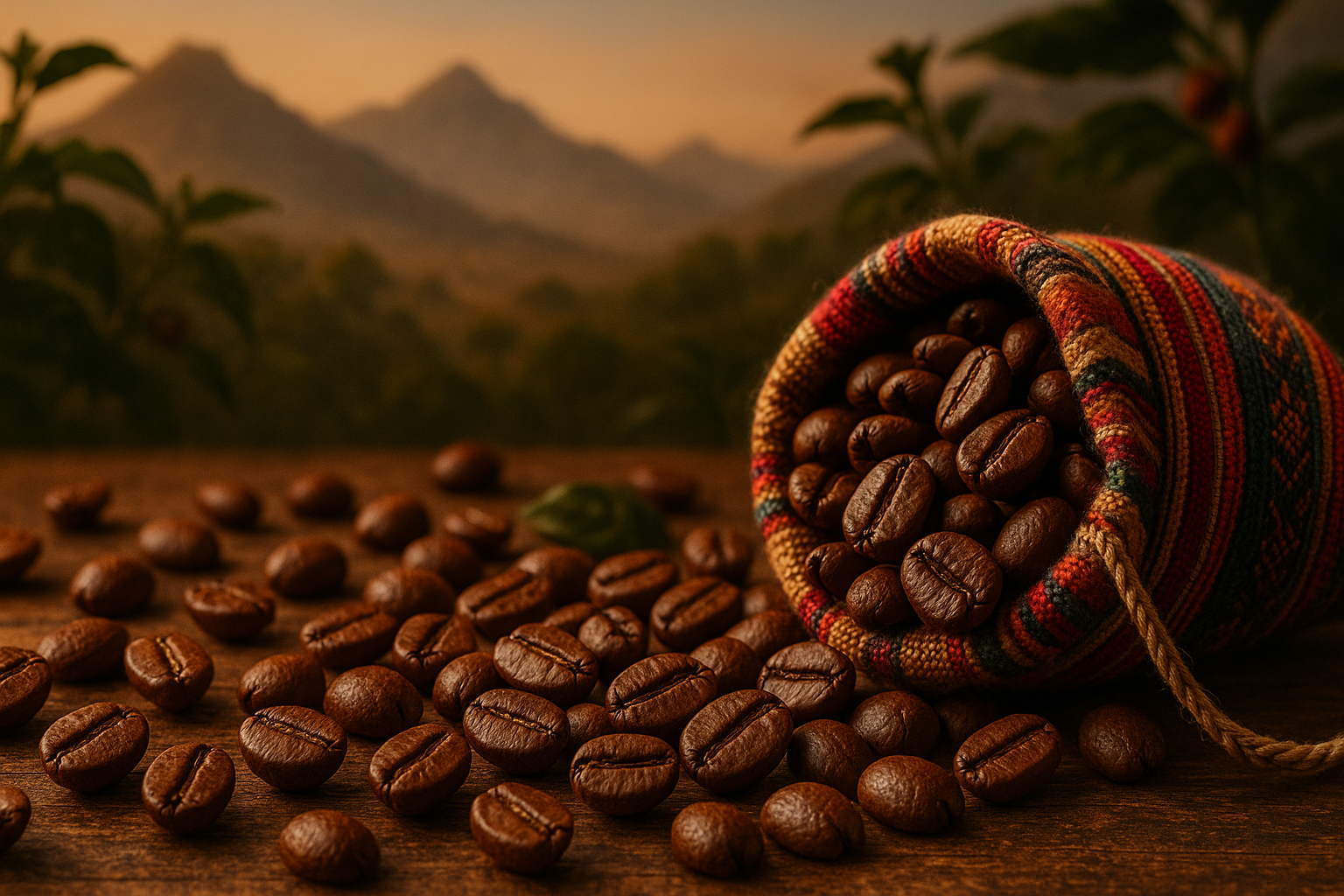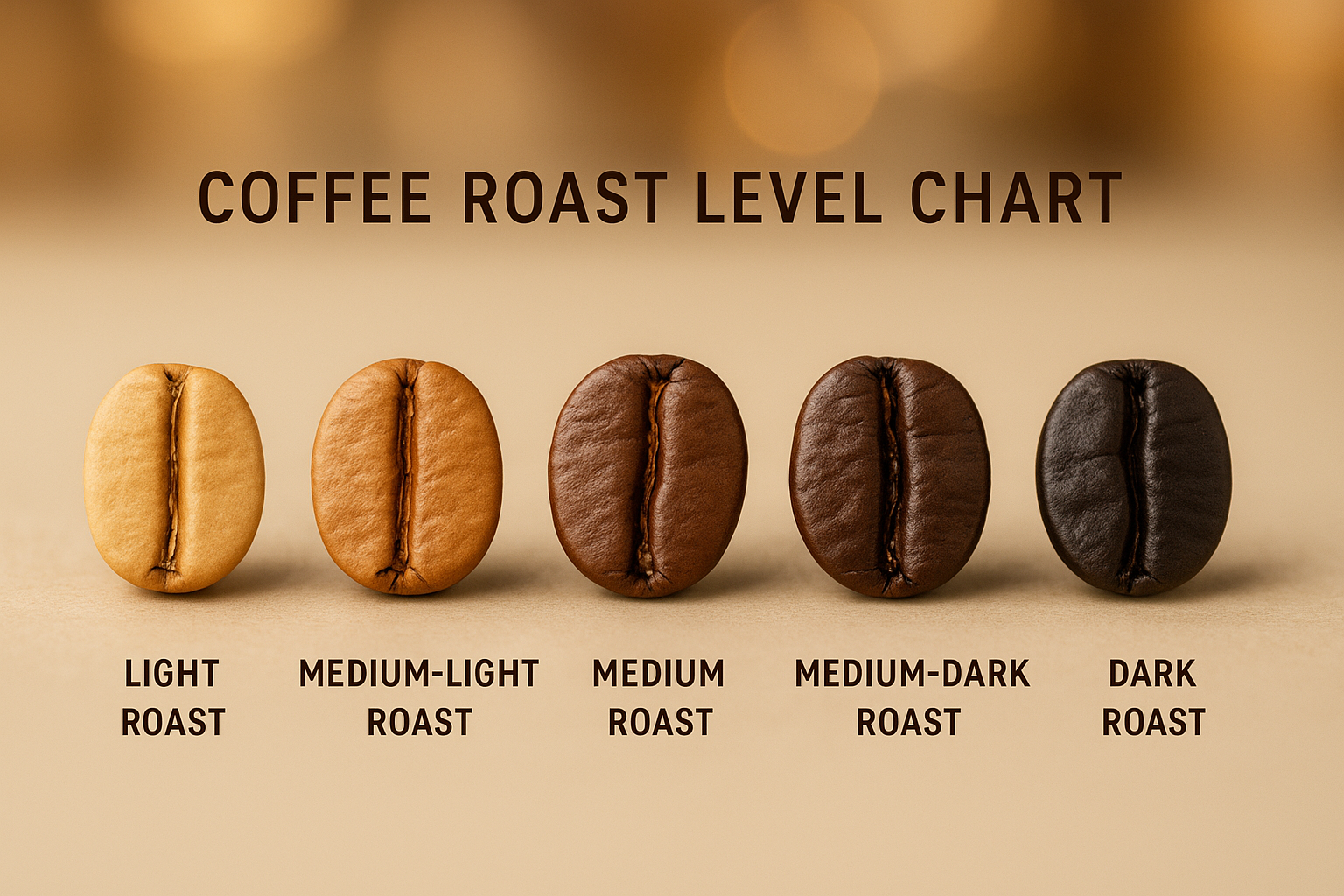
What Are the Top Coffee Growing Regions in Peru
Peru is one of the hidden gems of the coffee world. While countries like Colombia and Ethiopia get much of the spotlight, Peru quietly produces some of the smoothest and most balanced coffee available today. Its beans are known for gentle acidity, floral aromas, cocoa undertones and a silky body. But not all Peruvian coffee is created equal. Much of its quality and flavor depends on where it is grown.
Like wine, coffee takes on the character of its environment. The altitude, soil, temperature and rainfall all influence the final taste in the cup. In Peru, coffee is grown in several mountainous regions spread across the Andes, and each has its own unique profile.
In this blog, we will explore the top coffee growing regions in Peru and explain what makes each one special. Whether you are a roaster, a café owner or just a curious coffee lover, understanding these regions will help you choose the right Peruvian coffee for your taste.
1. Cajamarca
Cajamarca is often considered the crown jewel of Peruvian coffee. Located in the north of the country, this high-altitude region produces some of the finest specialty lots available. Elevations range from 1600 to 2000 meters above sea level, and the cool mountain climate leads to slow cherry development. This results in dense, flavorful beans with complex sugars.
Cajamarca coffees are typically washed processed and known for their balance. Expect notes of milk chocolate, orange, plum and almond. The acidity is gentle but present, making it a favorite for pour over and drip methods. The cup is smooth, clean and comforting.
The region includes smaller areas like San Ignacio and Jaén, both of which are home to smallholder farms and cooperatives. These communities are often involved in organic and sustainable practices, which adds another layer of appeal.
2. Cusco
Located in southern Peru, Cusco is another standout region for high-quality coffee. Once the heart of the Inca Empire, it now hosts hundreds of small farms growing Arabica varieties at elevations around 1500 to 1800 meters. The climate here is more tropical, with defined wet and dry seasons.
Cusco coffees tend to have a brighter profile compared to Cajamarca. You might find notes of lemon, green apple and red berries layered over a base of toffee or caramel. The acidity is more lively, and the finish is crisp. These coffees are great for manual brewing methods that highlight clarity.
One reason Cusco coffees are gaining popularity is due to the work of quality-focused cooperatives that provide training and access to better processing equipment. This has improved consistency and helped place Cusco on the specialty coffee map.
3. Amazonas
Situated in the northeastern part of Peru, Amazonas is a lush and biodiverse region with excellent growing conditions. Coffee here is cultivated at elevations similar to Cajamarca, and many of the farms are small and family-run.
What sets Amazonas apart is its floral and aromatic profile. You can expect jasmine, honeysuckle, mild citrus and tea-like notes. These beans often have a lighter body but a refined structure that appeals to those who enjoy delicate coffees.
Amazonas is still developing its reputation in the international market, but more importers and roasters are beginning to explore its potential. If you are looking for something a bit different within the Peruvian spectrum, Amazonas is worth trying.
4. San Martín
San Martín is located on the eastern slopes of the Andes and is known for its ecological diversity. The region has a mix of old-growth forests, cloud forests and fertile soil. It is one of the main coffee producing areas in Peru, contributing significantly to the national output.
San Martín coffees are typically mild and approachable. They lean toward chocolate and nut notes, with low acidity and a smooth mouthfeel. While not as complex as Cajamarca or Cusco, they are consistent and easy to drink. This makes them ideal for blends or everyday brews.
San Martín has also seen growth in organic and shade-grown practices, as farmers work to preserve the environment while maintaining quality.
5. Puno
Puno sits in the far south of Peru near the border with Bolivia. It is one of the highest elevation coffee regions in the country, with farms reaching up to 2000 meters. The high altitude leads to dense beans with deep sweetness and complexity.
Puno coffees are rare but highly prized. They often feature dried fruit, brown sugar and spice notes. The body is round and full, with a lingering aftertaste. Because of the elevation and limited infrastructure, production is small, but the quality can be exceptional.
If you come across a lot from Puno, especially one that is fully traceable, it is worth trying. These coffees perform well in both manual and espresso-based brewing.
What Makes Peruvian Regions So Unique
Several factors contribute to the diversity and quality of Peruvian coffee regions:
-
Altitude: Most coffee is grown between 1200 and 2000 meters. Higher altitudes slow down growth, creating more flavorful beans.
-
Climate: The Andes mountains provide cool nights and warm days, which help develop sugars and acidity.
-
Soil: Volcanic and mineral-rich soil enhances nutrient absorption.
-
Processing: Most farms use washed processing, which brings clarity and consistency.
-
Farming Practices: Many Peruvian farmers use organic methods, crop diversity and shade trees to protect their land and beans.
This combination of natural factors and mindful cultivation results in coffees that are not only delicious but also environmentally and socially responsible.
How to Choose the Right Region for Your Taste
Here is a quick guide to help you decide which Peruvian region matches your flavor preferences:
-
Cajamarca: Smooth, balanced, chocolate and almond. Great for beginners or daily drinkers.
-
Cusco: Bright, fruity, clean. Ideal for pour over lovers who want clarity.
-
Amazonas: Floral, tea-like, delicate. A favorite for light roast fans.
-
San Martín: Mild, chocolatey, low acidity. Good for blends and cold brew.
-
Puno: Rich, deep, spicy. Perfect for espresso and adventurous palates.
At First Light Roasters, we currently feature a single origin from Cajamarca, roasted to highlight its milk chocolate base and citrus brightness. It is versatile, balanced and perfect for both black coffee and milk-based drinks.
Final Thoughts
Peru is one of the most exciting origins in the coffee world today. Its diverse regions offer something for everyone, from the floral elegance of Amazonas to the deep sweetness of Puno. As more growers invest in quality and traceability, Peruvian coffee continues to earn its place among the best in the world.
Understanding where your coffee comes from is part of the joy of drinking it. Next time you sip on a cup of Peruvian single origin, think about the high mountains, cool nights and hard-working farmers who brought it to life.
Whether you prefer a clean and bright cup or something rich and comforting, there is a region in Peru that will meet your needs. Explore them all and find your favorite.




Leave a comment
This site is protected by hCaptcha and the hCaptcha Privacy Policy and Terms of Service apply.